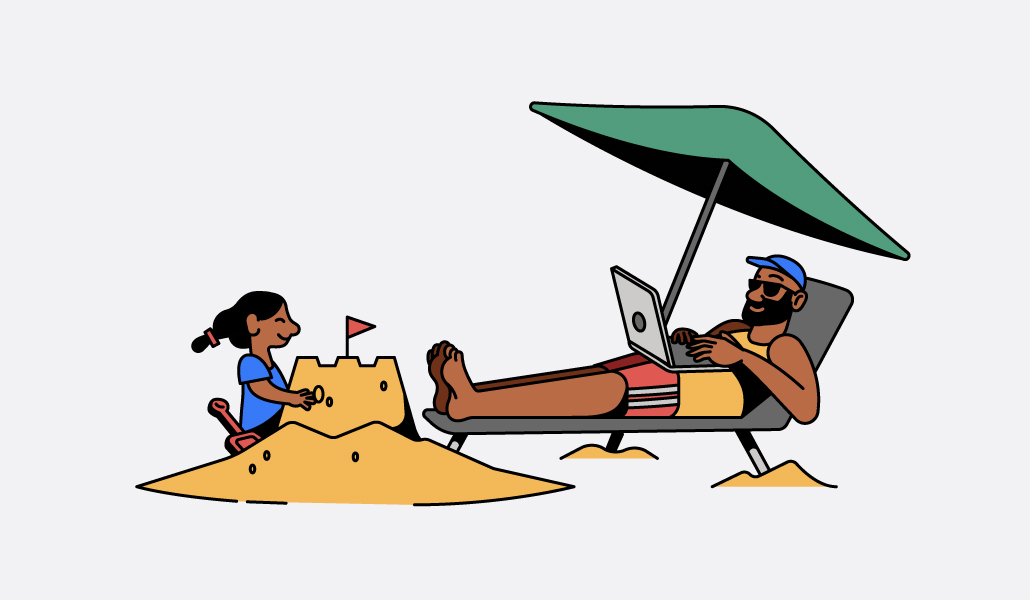WTF is work-life blend?

Long before the pandemic sent us into virtual work, work-life balance was the buzzy term the masses strived for.
While the idea of a balance between work and home sounds glorious, the reality is it’s virtually impossible to achieve, particularly as the lines between the two worlds blurred because of the pandemic lockdown.
Creating a work-life blend aims to restore the balance. It’s a term that existed before the pandemic, but gained traction as our living room became our office during lockdown. It was impossible to extricate work life from home life, creating a never-ending workday where people sat at their laptops well into the evening. Technology, which was long thought of as a way to make life easier, actually made the workday longer.
Proponents of a blend aim to reduce tension between the two worlds.
“With work life balance it’s as if there’s a pie chart with half the circle work and the other half your personal life,” said Gleb Polyakov, CEO of the communication API platform Nylas. “That’s the wrong way to look at it.”
Tina Mirfarsi, vice president of communications and culture at CarParts.com, agrees.
“Thinking of your work and personal life as a blend rather than two things that are conflicting shows that there doesn’t need to be a perfect balance,” she said. “It encourages flexibility. So when you have to step away from one, you can do it without needing to compromise or favor the other.”
Changing priorities
Working from home isn’t the only change the pandemic had on employees. There’s been a lot of talk about people rejiggering their priorities, not making work the center of life anymore. Figuring out how to create a framework for doing that is essential.
“It’s tough to say here are the specific hours I’m spending at work and here are the hours I’m not at work,” Polyakov said. “And the higher up you go the fuzzier it gets. How do you create an approach that doesn’t put work and life at odds with each other?”
That’s a question Sam Isaacson thinks about a lot. As a father of four who lives in the London suburbs and is global director of consulting at CoachHub, the ability to see his kids more than just a few minutes before he left work at 7 a.m. and when he returned often at 8 p.m. has been “a joy.”
He mostly works from home now and can have lunch with his wife when schedules permit and can drop the kids off at school in the morning. There isn’t such a stark line between personal and work. That means if an assignment isn’t imminently due, he can take the time to see the Lego creation the kids made and return to a work assignment in the evening after they’ve gone to bed.
“In work life balance you take the day and cut it in half,” said Isaacson. “Half the day is dedicated to work and the other half is ‘real life.’ Since lockdowns and the greater embracing of working from home, flexibility and the increase of gig economy work with portfolio careers, it’s not as easy to draw clear boundaries.”
An employer’s role
Achieving this ‘blend’ takes trust and buy-in from employers. At the payroll service provider DailyPay, Jeanniey Walden and her team have taken steps to embrace this philosophy with simple actions that show employees that their personal lives are valued. Walden, chief innovation and marketing officer, now has everyone block 12:30-1:30 on their calendar. It’s mostly so the team can eat lunch but also to accomplish other personal things that come up throughout the day when they work from home.
As a company, DailyPay also implemented a rule that no one is allowed to work when they’re on paid time off. They’ve also asked everyone not to send any work communications on weekends, holidays and after a reasonable hour during the week unless it’s a true emergency.
“When the pandemic hit it became a work-life blur,” said Walden. “Nobody knew where the workday ended and started. Businesses need to establish boundaries and ground rules to get people back into a balance.”
It also means knowing yourself. A morning person might wake before the rest of the house to get several hours of work accomplished versus a night owl who does the same when the sun goes down. Doing that allows them to incorporate parts of their personal life into their day.
But what’s an employee to do when a partner, roommate or kid comes barreling in upon getting home from school or work every day while you’re on a call? Walden says the answer may be as simple as blocking 15 minutes on the calendar daily to ensure you’re able to simply say, hello and how was your day?
“I think that’s reasonable and where we need to get to,” she said. “Hybrid working is here to stay and kids and family are more important than any work call.”